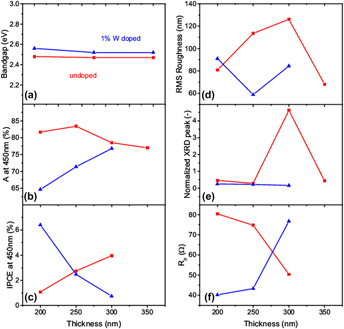Crossref Citations
This article has been cited by the following publications. This list is generated based on data provided by
Crossref.
Chen, Acong
Bian, Zhaoyong
Xu, Jie
Xin, Xin
and
Wang, Hui
2017.
Simultaneous removal of Cr(VI) and phenol contaminants using Z-scheme bismuth oxyiodide/reduced graphene oxide/bismuth sulfide system under visible-light irradiation.
Chemosphere,
Vol. 188,
Issue. ,
p.
659.
Perez‐Rodriguez, Paula
Bennani, Yasmina
Alani, Mathew Jose
Smith, Wilson
Rietveld, Luuk Cornelis
Zeman, Miro
and
Smets, Arno Hendrikus Marie
2017.
Treatment of Organic Pollutants Using a Solar Energy Driven Photo‐Oxidation Device.
Advanced Sustainable Systems,
Vol. 1,
Issue. 6,
Mayer, Brooke K.
and
Ryan, Donald R.
2017.
Applications of Advanced Oxidation Processes (AOPs) in Drinking Water Treatment.
Vol. 67,
Issue. ,
p.
345.
Wang, Jingjing
Zhang, Nan
Jiang, Chenye
and
Zhang, Changsen
2018.
Adsorptive removal of phenol by single and double network composite hydrogels based on hydroxypropyl cellulose and graphene oxide.
Journal of Materials Research,
Vol. 33,
Issue. 23,
p.
3898.
Li, Kejian
Yang, Yang
Bacha, Aziz-Ur-Rahim
Feng, Yiqing
Ajmal, Saira
Nabi, Iqra
and
Zhang, Liwu
2019.
Efficiently complete degradation of 2,4-DCP using sustainable photoelectrochemical reduction and sequential oxidation method.
Chemical Engineering Journal,
Vol. 378,
Issue. ,
p.
122191.
Suhadolnik, Luka
Pohar, Andrej
Novak, Uroš
Likozar, Blaž
Mihelič, Aleš
and
Čeh, Miran
2019.
Continuous photocatalytic, electrocatalytic and photo-electrocatalytic degradation of a reactive textile dye for wastewater-treatment processes: Batch, microreactor and scaled-up operation.
Journal of Industrial and Engineering Chemistry,
Vol. 72,
Issue. ,
p.
178.
Wang, Lele
Chen, Shanshan
Wu, Pengcheng
Wu, Keliang
Wu, Jianning
Meng, Guihua
Hou, Juan
Liu, Zhiyong
and
Guo, Xuhong
2020.
Enhanced optical absorption and pollutant adsorption for photocatalytic performance of three-dimensional porous cellulose aerogel with BiVO4 and PANI.
Journal of Materials Research,
Vol. 35,
Issue. 10,
p.
1316.
Orimolade, Benjamin O.
and
Arotiba, Omotayo A.
2020.
Bismuth vanadate in photoelectrocatalytic water treatment systems for the degradation of organics: A review on recent trends.
Journal of Electroanalytical Chemistry,
Vol. 878,
Issue. ,
p.
114724.
Pedanekar, R.S.
Shaikh, S.K.
and
Rajpure, K.Y.
2020.
Thin film photocatalysis for environmental remediation: A status review.
Current Applied Physics,
Vol. 20,
Issue. 8,
p.
931.
Wu, Chunxu
Zhang, Jiaqi
Fang, Bin
Cui, Yongqian
Xing, Zipeng
Li, Zhenzi
and
Zhou, Wei
2021.
Self-floating biomass charcoal supported flower-like plasmon silver/carbon, nitrogen co-doped defective TiO2 as robust visible light photocatalysts.
Journal of Cleaner Production,
Vol. 329,
Issue. ,
p.
129723.
Gu, Shuo
Zhang, Yi
Zhou, Xiaoyu
Sun, Kai
Wu, Di
Gao, Kaiyue
and
Wang, Xiufang
2021.
Bi–MO bimetallic Co-catalyst modified Bi2MoO6 for enhancing photocatalytic performance.
Journal of Materials Research,
Vol. 36,
Issue. 3,
p.
646.
Tomkham, Praewnapa
Mitsantisuk, Chowarit
and
Ponchio, Chatchai
2022.
Highly practical and reproducible BiVO4 thin film fabrication using automatic dip-coating machine towards for photoelectrocatalytic activities improvement.
Materials Technology,
Vol. 37,
Issue. 11,
p.
1854.
Ali, Agha Zeeshan
Jagannathan, Sadhna
Bennani, Yasmina-Doekhi
van der Hoek, Jan Peter
and
Spanjers, Henri
2023.
Photoelectrocatalytic based simultaneous removal of multiple organic micro-pollutants by using a visible light driven BiVO4 photoanode.
Journal of Water Process Engineering,
Vol. 56,
Issue. ,
p.
104471.
Ali, Agha Zeeshan
Wu, Yiqian
Bennani, Yasmina-Doekhi
Spanjers, Henri
and
Hoek, Jan Peter van der
2023.
Photo-electrocatalytic based removal of acetaminophen: Application of visible light driven heterojunction based BiVO4/BiOI photoanode.
Chemosphere,
Vol. 324,
Issue. ,
p.
138322.
Zhang, Huining
Tian, Lihong
Han, Jianping
Wei, Zhiqiang
Wu, Zhiguo
Zhu, Ying
Guo, Qi
Tang, Yuling
Cao, Yang
Zhang, Zongqian
Gong, Juanxiao
and
Wang, Hongyu
2024.
Insights into the PMS activation towards phenol removal mechanism by a Ti3C2-MXene doped BiVO4 photocatalyst.
Colloids and Surfaces A: Physicochemical and Engineering Aspects,
Vol. 698,
Issue. ,
p.
134561.
Ali, Agha Zeeshan
Mohapatra, Sanjeeb
van der Hoek, Jan Peter
and
Spanjers, Henri
2025.
BiVO4-based photoanodes for the photoelectrocatalytic removal of trace organic pollutants from water: A mini review on recent developments.
Current Opinion in Environmental Science & Health,
p.
100615.
